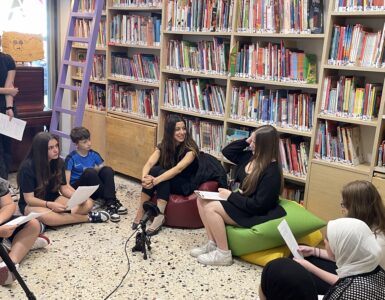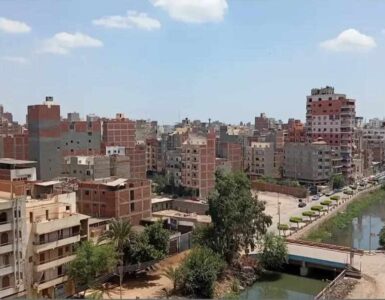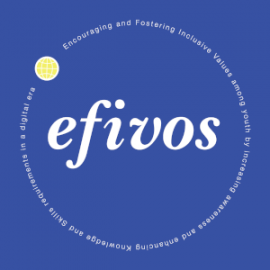Not long ago, on the occasion of International Women’s Day, one video was posted in Greek Media depicting a woman with a full hijab who started removing it. Afterwards, she started talking about freedom. I showed this video to my non-Muslim friends and asked them about their impressions. All of them said that the hijab was a barrier to her freedom. So, this representation gives the impression to the wide audience that the hijab is a barrier. But in my opinion, the video would be accurate if they also portrayed women wearing a hijab speaking about freedom, without seeing its existence as a barrier.
Human beings have the right to decide on their own clothes and the obligation to respect the rights of others. This is one of the basic principles regarding human rights. At the same time, in the Media, the first thing that is supposed to matter is impartiality and expression of the truth, isn’t it? So, why do not the Media invest in making a video of successful women with hijabs? Have you ever seen a video of a successful woman with a hijab in Greek Media? Have you ever asked the women with hijabs what kind of problems they are facing? Why do we always pretend that the problem does not exist or underestimate it instead of finding a solution for it?
I believe that nowadays Media play an important role in the way society shapes its opinions. Noticing the stereotypes the Media recreate regarding Muslim women, as well as the wrong way people see me as a woman with a hijab, I decided to do deeper research on the role the Media play in the way women with hijabs are seen in the society.
After having several interviews with different individuals, I realised that the majority of people obtain information about Islam and Muslim women only through the Media. I decided to start my research by having a few interviews with local people from Greece and asking them what is their image of Muslim women with hijabs based on media representation. (E), a 40-years-old guy from Athens, answered “a shy woman who is always hiding behind her husband” and (M), a young woman from Thessaloniki, responded, “the images that our Media display of Muslim women is that they have no rights, neither at home nor in society”. Another young guy told, “the picture of Muslim women in my mind according to what Media always shows us is that women who are covered head to toe in black cloths are narrow-minded”. At the same time, his friend, who was also there, said “it is better to say that the majority thinks women with hijab are uneducated women who don’t have the right from parents or husbands to have an education”.
During all interviews I received several answers, emphasising the fact that women with hijab don’t have human rights, they are not allowed to go out of the house or even don’t have the right to choose their own clothes. This is something that does not agree at all with my personal experience as a Muslim woman. It seems that the Media ignore the topic and portray the wrong image of women with hijabs and this has a very serious effect on society’s impression of them. In fact, it can be said that the majority of negative images do not correspond to the real experiences of those women’s lives.
Actually, different religious sub-groups view in a different way women’s position in society and women’s rights. This is something that should be clarified by the Media when reporting on topics regarding Muslim women and the beliefs of parts of a specific group must be stated during media reports and they should not portray all women with hijabs as living in the same conditions. Most of the time this happens due to incorrect translation and lack of advanced news agencies that have local and Muslim networks and reporters, and sometimes due to biased reports from some reporters leading to an increase of Islamophobic or xenophobic tendencies. Showcasing this distorted information makes it more complicated for women with hijab to integrate into the local society sooner, to find a job or make new friends.
In order to have a clear picture of the way the lives of women with hijabs are affected by this media representation, I decided to have interviews with different women with hijabs living in Greece. I started my interview with this question: was wearing a hijab your own personal choice? And the answers I received were different.
Ms. (F) said, “no, it was not my personal choice because I was born in an Islamic country and I had to wear a hijab, but by immigrating to another country I decided to take it off”. Ms. (M) “yes, even though I was born in Greece, I started wearing hijab according to my own will”. Ms. (Z): “it was my personal choice but because of the host community, I had to stop wearing my hijab”. I asked Ms. (Z) to explain more and she explained it to me this way: “People gaze; the way people were staring at me and treated me and the comments I received repeatedly about my hijab were ISIS women, terrorists, thieves and dirty Muslims. All of these reasons made me remove my hijab without my will. I liked my hijab but after four years of living in a society that sees hijab as a guilty verdict, I could not handle it anymore and I faced a lot of psychological problems because of that. I had two options: either to keep my hijab and stay away from society or to give up on my hijab and merge into society. In the end, I chose the second option”.
I asked her to explain a bit more about the challenges and difficulties she faces because of wearing a hijab. She described “I have applied several times for a job in restaurants and stores, but when they saw my hijab in the interview, they said that I can’t work with a hijab. A restaurant manager explained “we will lose our customers and I will have many problems because of the hijab”. I asked her if the way of seeing her has been changed by the society after removing her hijab or not and she said, “yes, now the society sees me as an economic migrant looking for a job and I didn’t hear any comments like a woman of ISIS or terrorist”.
This interview was a clear example of the impact on the lives of women with hijab and how misinformation that the Media is spreading has made it for those women (migrants or refugees) much more difficult. What is contradictory, is that until about six or seven decades ago, women living in Greece, and especially in villages, used to wear scarves on their heads. It can be said that this image is part of the collective memory in the country. So, the Media could refer to tradition and culture in order to find cultural commonalities and use them to create a positive influence in the local society, rather than recreating negative stereotypes about terrorism. This creates illusions and increases fear in the local society.
The Media have the power to influence and direct changes. Social media and traditional media (including TV and radio) can initiate a positive change. During the last years, we all have witnessed how different fields, such as the film or fashion industry, have been affected by the way Media develop. They have embraced a more positive point of view towards different appearances, skin colours, bodies, etc. In fact, a step for the society could be printing posters of successful veiled women on the city walls, photos of veiled models or Disney animations with the character of veiled Muslim girls.
By giving women with hijabs more visibility in the society in which they live, they also give to these women a feeling of belonging in this society and being accepted by it. This, actually, is the first step towards social integration. And the easier the process of integration is, the faster will be the progress of this society.









Add comment